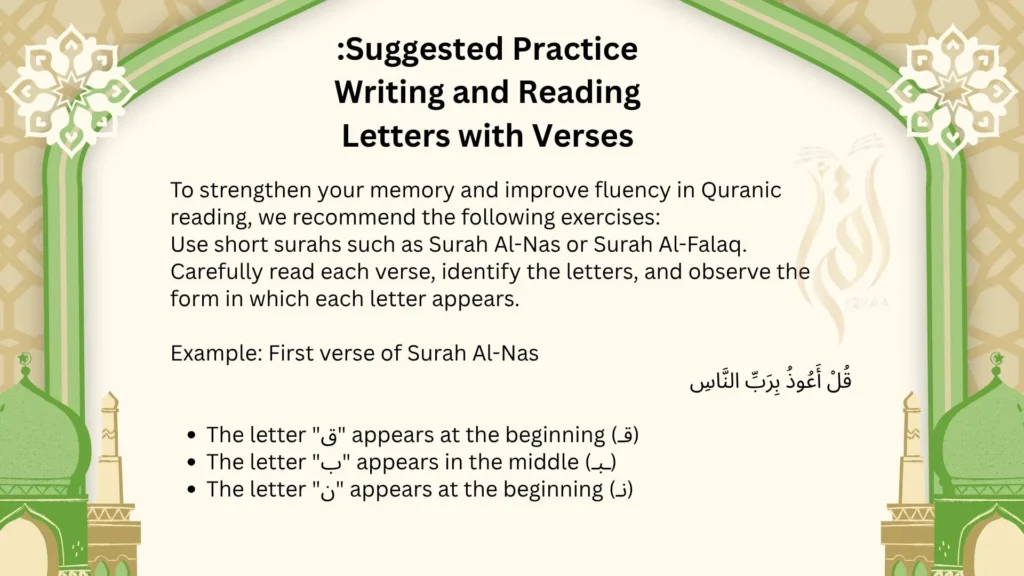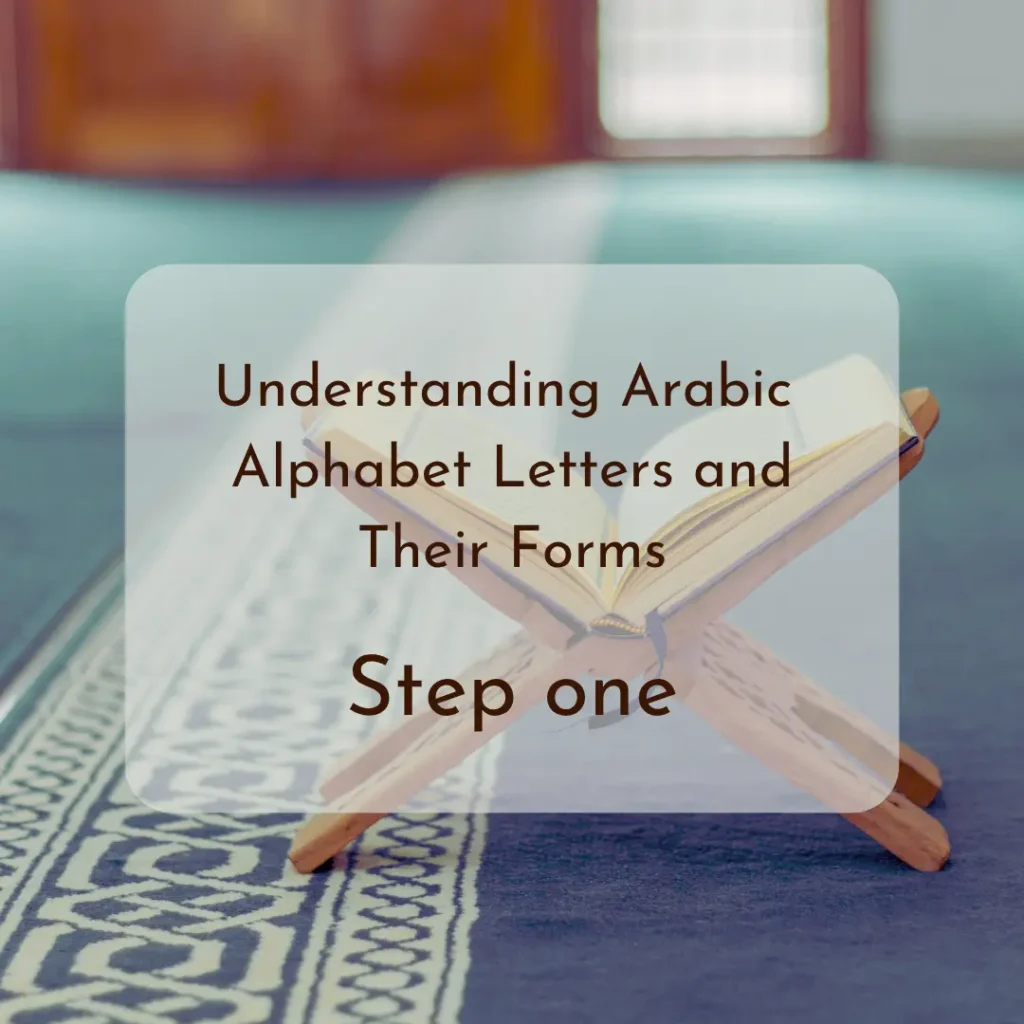The first step in learning to read the Quran properly is mastering the Arabic alphabet. Due to the visual similarity between Arabic and Persian letters, many learners assume that Quranic reading is simple. However, there are significant differences in pronunciation and usage that must be understood for correct Quranic recitation.
In this article, we will begin the first practical stage of learning Quran reading: getting familiar with the Arabic letters in the Quran, their forms, and useful tips for easier learning.
Internal Link: Refer to the previous article: What Is Quranic Reading and Why Should We Learn It?
How Many Letters Are in the Arabic Alphabet?
The Arabic alphabet consists of 28 letters. These letters form the core of all Arabic words. Unlike Persian, Arabic does not have the extra letters پ, چ, ژ, and گ. Understanding this basic difference is important at the outset.
Arabic Alphabet Table with Pronunciation
| Letter | Pronunciation in Persian | Quranic Example |
|---|---|---|
| ا (Alif) | a or ā | ﴿الله﴾ |
| ب (Ba) | b | ﴿بسم﴾ |
| ت (Ta) | t | ﴿تبارک﴾ |
| ث (Tha) | th (like “thawab”) | ﴿ثواب﴾ |
| ج (Jim) | j (like “jam”) | ﴿جنت﴾ |
External Link: For the complete list of Arabic letters, refer to Wikipedia – Arabic Alphabet
You can also listen to the pronunciation of each letter in the audio file provided on our platform. Repeat the audio multiple times to become familiar with correct recitation.
Differences Between Arabic and Persian Letters
While many Arabic words look similar to Persian ones, it’s important to pay attention to the following:
- Some Arabic letters are pronounced differently than in Persian.
- Arabic includes letters not found in Persian, such as ع، غ، ح، ص، ض، ط، ظ.
- Dotting and form in Arabic are more structurally significant and affect meaning.
Various Forms of Arabic Letters in the Quran
Another key difference is that Arabic letters change form depending on their position in a word. Each letter can appear in four main forms:
Isolated form
- Initial (beginning of word)
- Medial (middle of word)
- Final (end of word)
Example: The letter “ب” (Ba)
| Position | Form | Quranic Example |
|---|---|---|
| Isolated | بـ | ﴿بسم﴾ |
| Initial | بـ | ﴿بسم﴾ |
| Medial | ـبـ | ﴿ربنا﴾ |
| Final | ـب | ﴿قلب﴾ |
Recognizing these forms is essential, as Quranic words are usually written in a connected style.
Tips for Better Learning of the Arabic Alphabet
Here are some effective strategies to enhance your understanding:
- Listen and see simultaneously: When learning letters, see the script and listen to the pronunciation together.
- Use flashcards or apps: Educational tools such as mobile apps and flashcards reinforce memory.
- Repeat writing the letters: Practice writing each letter in all four positions to build muscle memory.
- Practice with real Quranic words: Learning through authentic Quranic examples improves retention and relevance.
Practical Exercise for Mastery
Completing these exercises will greatly help you progress to the next stage of our Quranic Reading Roadmap. Don’t skip them!
Write out the alphabet by hand daily.
Match each letter with its shape depending on word position.
Identify these forms in short surahs such as Surah Al-Nas or Al-Falaq.

Using AI to Learn the Arabic Alphabet
We recommend using intelligent educational tools to accelerate and deepen your learning of the Arabic alphabet in the Quran. One such platform is Iqra—Quran Recitation with AI, which uses voice recognition, real-time feedback, and step-by-step guidance to make the learning process more engaging and effective.
Mastering the Arabic alphabet and its different forms is the first step toward accurate Quranic reading. Without this foundation, it’s nearly impossible to read the Quran correctly.
In our previous article, we reviewed the overall path of Quranic learning. In the next article, we will move on to the second stage: learning diacritics (fatha, kasra, dhamma, and sukoon).
New articles will be published weekly as part of our step-by-step guide.

